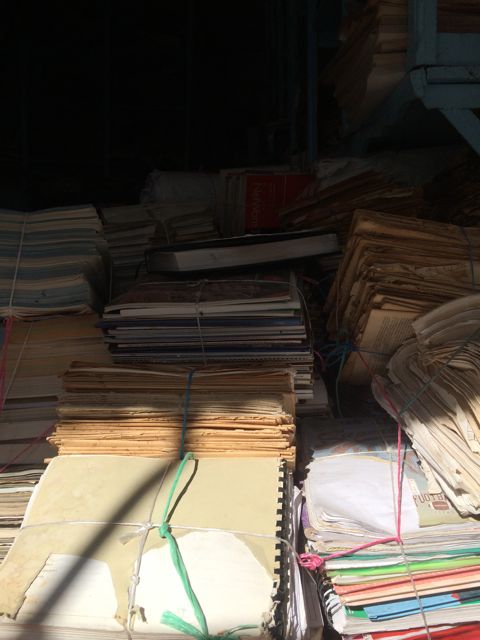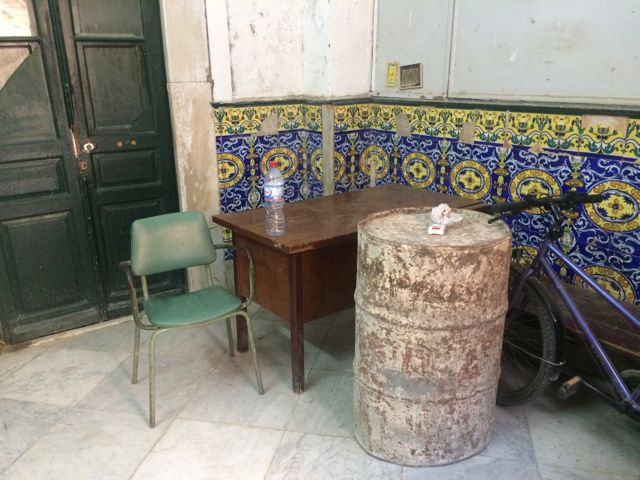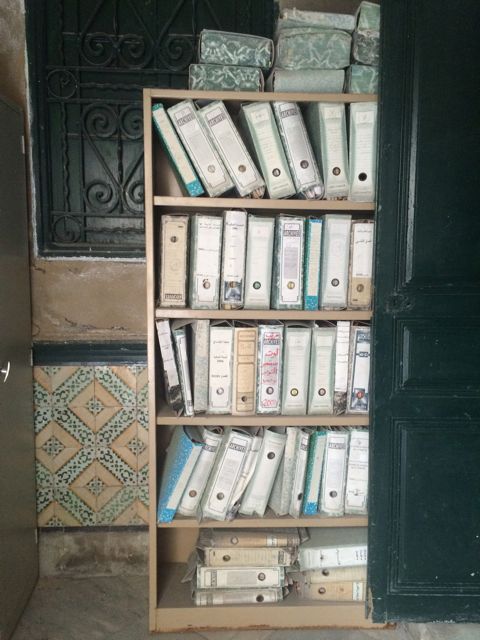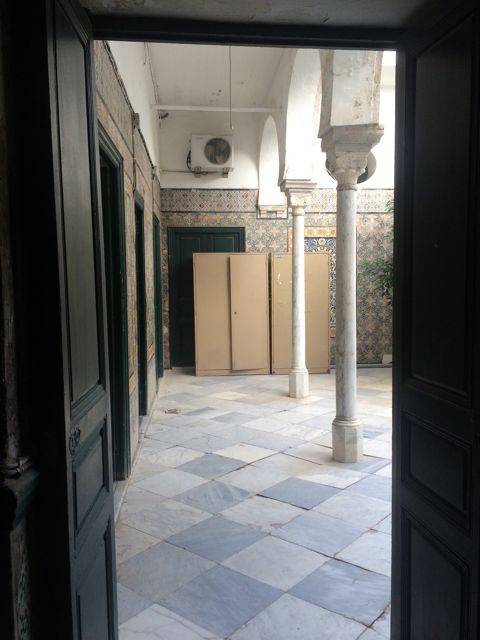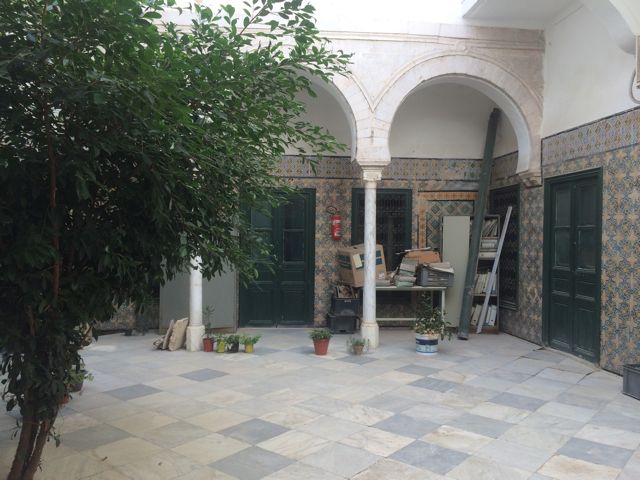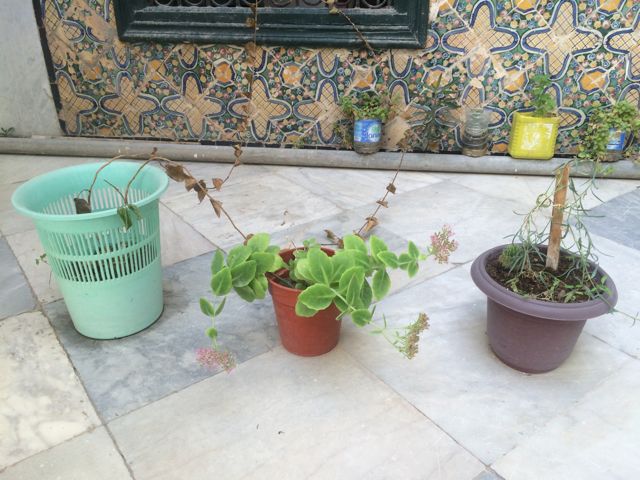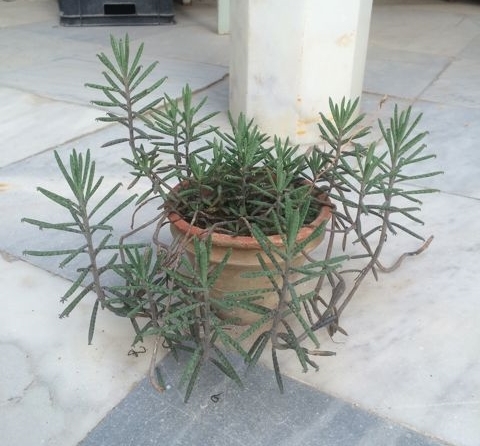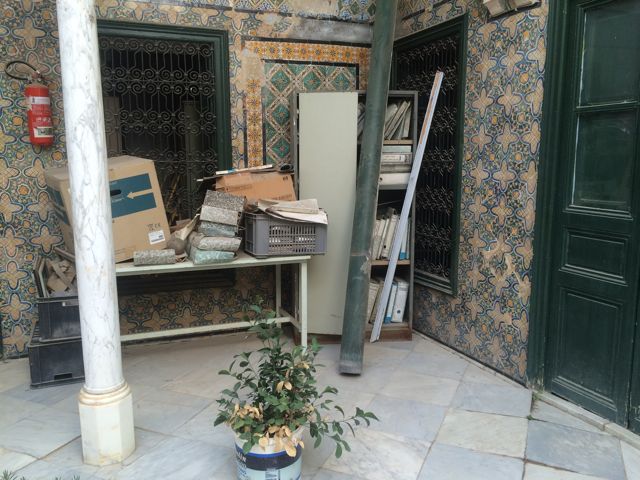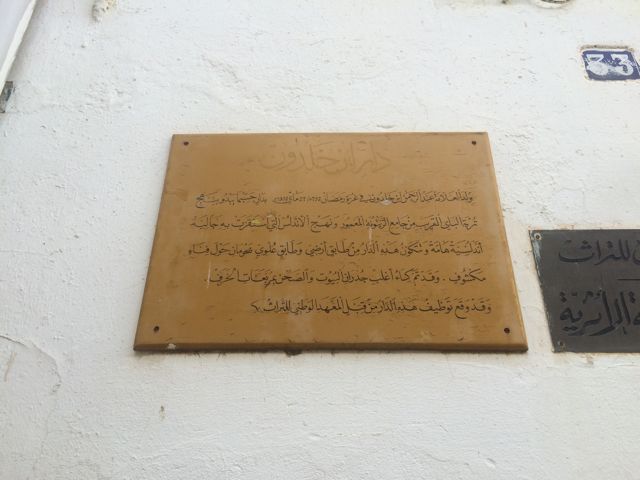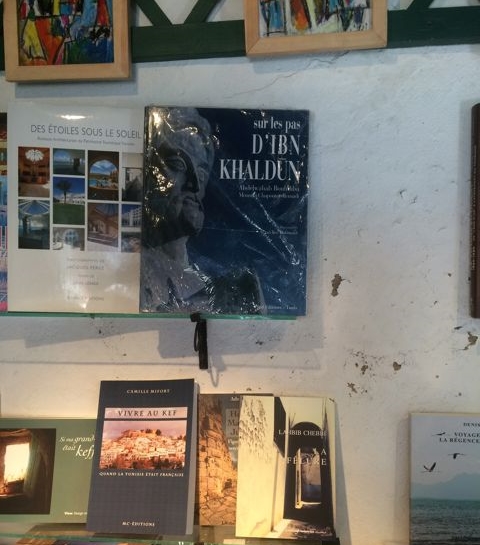Looking for the house of Ibn Khaldûn is one of the main obsessions of Mohamed S.N.P, the protagonist of Rachid Boudjedra’s novel Thousand and one Years of the Nostalgia. In the book, the house of the famous scholar, believed to be the father of modern sociology, is supposedly in a forgotten Algerian village in the middle of the desert.
Mohamed’s last name is S.N.P., an acronym that stands for “Sans Nom Patronymique”, without surname. This is a reference to an ironic administrative practice developed in colonised Algeria, where traditionally people didn’t necessarily use family names. This administrative twist is however a symptom of a deeper identity crisis for the character. Hence why Mohamed sets himself the goal of searching for the Muslim erudite’s house to reconnect with his past and reclaim his sense of self.
The house of Ibn Khaldûn that I discovered is in central Tunis, in an understated part of the medina. A faded plaque in Arabic signals the house where the great historian and philosopher was born and lived in the fourteenth century. There was nobody to greet me behind the open door, just an empty chair, as if the concierge had momentarily nipped out. It was unclear whether the building was meant to be open to the public.
Funnily enough, the house is now used as an office of the I.N.P, the state department for heritage, whose acronym stands for “Institut National du Patrimoine”. Each room, including the central courtyard, is filled with stacks of paper and files. Ibn Khaldûn’s house, now an archive depot, is caving under the weight of paperwork.
Mohamed S.N.P. would have probably interpreted this as the last joke of the colonisers, who left behind an administrative nightmare, making his quest for self-recognition so complex and intricate, he might never get to the bottom of it. The irony of this situation somehow made my visit more meaningful than if I had ran into a well-restored and curated historical building.
